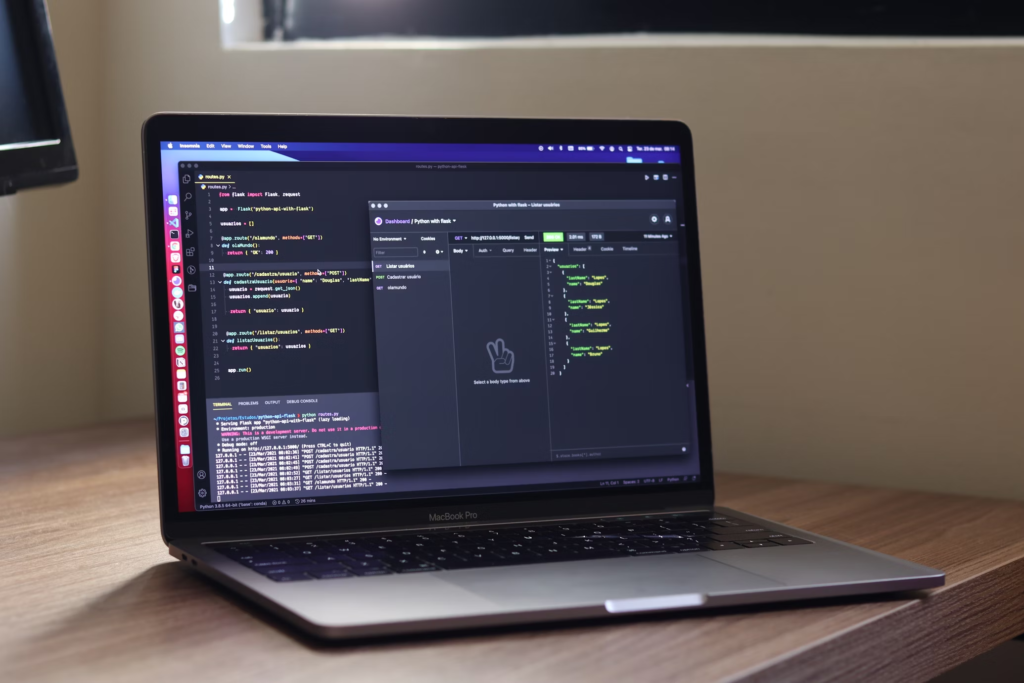Modern electronic devices – from smartwatches to industrial controllers – depend on high-quality firmware. It is responsible for the management of hardware, performance, safety, and convenience of working with the device.
Development of firmware is not just writing code. It is a complex process, including requirements analysis, architectural design, optimization of the work with the iron and safety. Companies that need reliable and efficient firmware are faced with a number of questions:
- How to choose the optimal stack of technologies?
- How to ensure long-term employment?
- How to minimize the costs of maintenance and upgrade?
In this article from Celadonsoft we will cover the key steps of firmware development, best practices and approaches that allow to create reliable software solutions for embedded systems.

Firmware Development Phases
Firmware development is a multistep process that requires an integrated approach. It is important not only to write the low-level code, but also to take into account the hardware features of the device, ensure stability of operation and possibility of further updates. We adhere to a clear design structure that allows us to create a reliable and effective solution.
1. Requirements Analysis
At this stage we define the project’s objectives, study the hardware platform and form the firmware requirements.
- Collection of requirements – together with the customer, discuss key tasks and expected results.
- Choice of architecture – determine whether the real-time OS (RTOS) is needed or will be enough bare-metal solution.
- Evaluation of limitations – analyze available computing resources (memory, clock frequency, energy consumption).
2. Architectural Design
Before writing the code, we develop a system structure to ensure flexibility, scalability, and simplicity of support.
- Module definition – select the individual components (drivers, control algorithms, communication protocols).
- Interaction with equipment – we develop a scheme of work with sensors, controllers and peripheral devices.
- Security – design data protection, cryptographic mechanisms and means of preventing unauthorized access.
3. Development and Programming
Based on the designed architecture, we create firmware code, following the best practices of programming in embedded-development.
- Development of drivers – write the code for working with the periphery (GPIO, UART, I2C, SPI and so on. d.).
- Code optimization – minimize memory and CPU usage.
- Implementation of business logic – write code, control the operation of the device and perform basic functions.
4. Testing and Debugging
Quality firmware requires multi-level testing to detect and correct errors before the final deployment.
- Unit-testing – check the performance of individual modules.
- Integration testing – test the interaction between components of the system.
- Real-world testing – We test firmware behavior in real conditions using debug boards, logic analyzers and oscillators.
5. Implementation and Support
After successful testing, we load the firmware into the devices and accompany it throughout its life cycle.
- Deployment – we download firmware via software, OTA updates or communication interfaces.
- Updates and fixes – we develop firmware update mechanisms, fix detected problems.
- Technical support – we provide advice and adapt the software to new requirements.
This approach allows us to develop reliable and efficient firmware that meets customer requirements and industry standards.

Key Components of Successful Firmware
Developing quality firmware requires not only a professional approach, but also taking into account several critical aspects. Performance, security, and modularity are the three key components that determine the reliability and efficiency of embedded software.
Optimization of Performance
Firmware should work as efficiently as possible, using minimal resources. This is especially important for devices with limited computing power.
Minimizing resource consumption
- Optimization of the code to reduce CPU load and memory consumption.
- Efficient flow and interruption management.
- Use hardware acceleration where possible.
Speed of critical operations
- Minimization of delays in data processing.
- Optimization of algorithms, especially in real time.
- Use of asynchronous processes and DMA (direct memory access) to speed up the work with the periphery.
Ensuring Security
Security is becoming a top issue in the face of increasing cyber threats. Since embedded devices frequently operate in vital systems, protecting them is not an option — it is a need.
Mechanisms to protect against unauthorized access
- Secure data storage in an energy-independent memory.
- Hardware and software encryption.
- Check the integrity of firmware with digital signatures.
Updates and protection from attacks
- Support for secure update (OTA) with file authentication.
- Use secure communication protocols (TLS, DTLS, MQTT with encryption).
- Protection against attacks at the boot level (secure boot).
Modularity and Extensibility
Firmware should be flexible and easily adaptable for future changes. This is critical for long-term device support and upgrading.
Modular architecture
- Split the code into independent modules to facilitate debugging and updates.
- Ability to add new functions without major code changes.
- Support for drivers and middleware compatible with different platforms.
Flexibility and cross-platform
- Support for various microcontrollers and chipsets.
- Possibility to port firmware to other hardware platforms.
- Integration with existing ecosystems (IoT platforms, cloud services).

Advantages of a Comprehensive Approach to Firmware Development
We always take a comprehensive approach to the development of firmware, which includes several key aspects that bring significant benefits for both us and our customers.
1. Reduced Costs and Lead Times
One of the main advantages of an integrated approach is reduced development time and cost. We use proven methodologies and frameworks that minimize errors in the early stages of development. This not only reduces the time to build the final firmware version, but also reduces the cost of finishing and testing.
2. Improving Quality and Reliability
The process of multiple testing and implementation of best practices development allows us to create firmware that meets the highest quality standards. We focus on creating reliable solutions that work effectively in a variety of operating conditions. Each project goes through strict verification and optimization steps, which minimizes the risk of errors in the final stages.
3. Flexibility and Adaptability
The comprehensive development of firmware allows being flexible and respond quickly to changes in customer or market requirements. We develop firmware with the ability to scale and expand, which allows us to adapt the solution to future changes without rewriting the entire code base.

Choose a Partner for the Development of Firmware
Choosing the right partner for developing firmware is one of the most important steps to successfully implement a project. It is significant to consider several factors that will ensure you quality and timely work.
Selection criteria
When selecting a contractor, the following key points should be considered:
- Company experience and portfolio. Look for a company like Celadonsoft with experience in developing products for similar devices and platforms. The presence of successful projects with similar technical requirements is an essential indicator of competence.
- Availability of qualified specialists. The team’s competencies directly affect the quality of work. Ensure that the company has experienced engineers who can work with modern microcontrollers and real-time operating systems.
- Customer reviews and reputation in the market. Read Celadonsoft’s reviews and explore its reputation in the industry. This will help you understand how reliable a partner it is.
Importance of communication and transparency
The secret to effective collaboration is open and flexible communication at every level of growth. We are sure that openness in the development process and frequent updates on job execution will prevent miscommunications and enable prompt modifications to the work plan. Clear definition of the objectives and coordination of all changes with the client — the guarantee that the result will meet expectations.
Finally
Finally, it is important to note that comprehensive firmware services as MVP development are not just about creating software for the device. It is a long-term process, involving careful design, development, testing, and support. The right approach in all stages of development guarantees high quality and reliability of the product.
